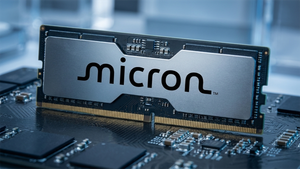- Publication validates unique ability of ARCUS genome editing to preferentially target and eliminate mutant m.3243G mitochondrial DNA (mtDNA) with high specificity
- mitoARCUS efficiently shifted m.3243A>G heteroplasmy without off-target activity, leading to an overall improvement in mitochondrial function
Precision BioSciences, Inc. (Nasdaq: DTIL), an advanced gene editing company utilizing its novel proprietary ARCUS® platform to develop in vivo gene editing therapies for sophisticated gene edits, including gene insertion, excision, and elimination, today announced publication in the journal Nature Metabolism of a peer reviewed manuscript titled “Efficient elimination of MELAS-associated m.3243G mutant mitochondrial DNA by an engineered mitoARCUS nuclease.” This publication includes preclinical research supporting continued development of the PBGENE-PMM in vivo gene editing program as a potentially curative therapeutic approach for patients with m.3243-associated primary mitochondrial myopathy (PMM).
“As a result of attributes that differentiate ARCUS, especially its cut, size, and simplicity as a single-component protein, our strategy is to expand the use of gene editing beyond simple gene knockouts in the liver into more sophisticated edits where ARCUS is uniquely applicable. For mitochondrial diseases, what makes ARCUS such an elegant and simple tool is that it is a single protein that both recognizes and eliminates the mutant mitochondrial DNA,” said Jeff Smith, Ph.D., Chief Research Officer of Precision BioSciences. “Today’s publication further validates the ability of ARCUS to overcome the limitations of CRISPR-based gene editing technologies for treating mitochondrial disease and eliminating mutated mitochondrial DNA with high specificity to improve overall mitochondrial function. Furthermore, these data highlight our ability to design ARCUS nucleases to discriminate a single nucleotide change between the mutant and wild-type DNA sequence, even at very high dose levels. These data strengthen our conviction in PBGENE-PMM as a novel therapy for primary mitochondrial myopathies and we look forward to advancing this program towards an anticipated clinical trial application (CTA) and/or investigational new drug (IND) filing in 2025.”
The Nature Metabolism publication highlights the development of a mitochondrial-targeted ARCUS nuclease, mitoARCUS, which is designed to specifically target and cleave the pathogenic m.3243G point mutation. Using cells that contained 95% mutant m.3243G mtDNA, mitoARCUS was found to eliminate all of the mitochondrial DNA containing the mutation, leaving the wild-type or normal mitochondrial DNA untouched. This wild-type mitochondrial DNA was then able to be rapidly replicated by the cell in order to maintain a steady mitochondrial DNA copy number. By eliminating the mutant mitochondrial DNA and allowing the wild-type mitochondrial DNA to repopulate, mitoARCUS drives a shift toward healthy mitochondrial DNA, a process known as shifting heteroplasmy.
“To date, there are no curative treatments for mitochondrial diseases, so a gene editing approach is a novel way to offer hope to the patients suffering from mitochondrial myopathy. However, many gene editing technologies, especially those derived from CRISPR approaches, have been unable to effectively target mutant mitochondrial DNA because they are complicated by numerous components, so they are not expected to be effective therapeutic options for mitochondrial diseases. The simplicity of mitoARCUS has allowed it to be one of the first approaches to demonstrate an ability to not only distinguish the single nucleotide difference in the m.3243A>G mutation, but also efficiently eliminate the mutation to allow wild-type mtDNA to repopulate within the cell and restore function,” said Carlos Moraes, PhD, Esther Lichtenstein Professor of Neurology, and Cell Biology and Anatomy at the University of Miami Miller School of Medicine. “This exciting development has the potential to bring a curative treatment for patients suffering from m.3243 associated primary mitochondrial myopathy and the ARCUS technology can potentially be applied to other mitochondrial diseases in the future.”
About Mitochondria and Primary Mitochondrial Myopathy
Mitochondria contain multiple copies of a circular DNA molecule, referred to as mtDNA, which are necessary to support mitochondrial function and the production of energy. Due to the multi-copy nature of the genome, mutations often exist in a state known as heteroplasmy in which both mutant and wild-type genomes are present in the same cell. The presence of the wild-type molecules offsets the impact of the mutant ones until a particular disease threshold is reached. Unlike the nuclear DNA which is repaired following double-strand breaks, there is no efficient double-strand break repair mechanism in mitochondria and any genomes that are linearized will be rapidly degraded. A tightly controlled mechanism for maintaining mitochondrial DNA copy number results in the replication of any remaining genomes following a depletion. Therefore, nuclease-induced double-strand breaks in mutant mitochondrial DNA molecules can lead to shifts in mitochondrial DNA heteroplasmy. It is believed that a shift in mitochondrial DNA heteroplasmy toward wild-type (normal) may provide therapeutic benefit for patients, and not all mutant mitochondrial DNA must be eliminated to achieve improvements in symptoms. Rather, mutant mitochondrial DNA levels only need to be shifted below the disease threshold.
Mitochondrial diseases that arise from mutations in mitochondrial DNA are the most common hereditary metabolic disorder, affecting 1 in 4,300 people. Primary mitochondrial myopathy is characterized by severe fatigue and can affect skeletal muscle, and other high energy organs such as the brain, eyes, ears and heart. Primary mitochondrial myopathy currently lacks curative treatment and impacts approximately 50% of patients with mitochondrial disease.
About PBGENE-PMM:
The high specificity and simple, single component nature of Precision’s mitoARCUS nucleases are designed to enable specific editing to eliminate mutant mitochondrial DNA while allowing wild-type (normal) mitochondrial DNA to repopulate in the mitochondria and restore normal function. PBGENE-PMM is a wholly-owned program of Precision BioSciences which is designed to detect a single base pair defect and make a cut in the mutant mitochondrial DNA which results in its elimination.
About ARCUS
ARCUS is a proprietary genome editing technology discovered and developed by scientists at Precision BioSciences. It uses sequence-specific DNA-cutting enzymes, or nucleases, that are designed to either insert (knock-in), excise (knock-out), eliminate, or repair DNA of living cells and organisms. ARCUS is based on a naturally occurring genome editing enzyme, I-CreI, that evolved in the algae Chlamydomonas reinhardtii to make highly specific cuts in cellular DNA and stimulate gene insertion at the cut site by homologous recombination. Precision's platform and products are protected by a comprehensive portfolio including nearly 100 patents to date.
About Precision BioSciences, Inc.
Precision BioSciences, Inc. is an advanced gene editing company dedicated to improving life (DTIL) with its novel and proprietary ARCUS® genome editing platform that differs from other technologies in the way it cuts, its smaller size, and its simpler structure. Key capabilities and differentiating characteristics may enable ARCUS nucleases to drive more intended, defined therapeutic outcomes. Using ARCUS, the Company’s pipeline is comprised of in vivo gene editing candidates designed to deliver lasting cures for the broadest range of genetic and infectious diseases where no adequate treatments exist. For more information about Precision BioSciences, please visit www.precisionbiosciences.com.
Forward-Looking Statements
This press release contains forward-looking statements within the meaning of the Private Securities Litigation Reform Act of 1995. All statements contained in this press release that do not relate to matters of historical fact should be considered forward-looking statements, including, without limitation, statements regarding the therapeutic potential of an ARCUS gene editing approach for the treatment of m.3243-associated PMM, including the ability of ARCUS to preferentially target and eliminate mutant m.3243G mtDNA with high specificity and without off-target activity, anticipated timing of a CTA and/or IND filing, the ability of mitoARCUS to shift heteroplasmy, and expected safety, efficacy, and benefit of our gene editing approaches. In some cases, you can identify forward-looking statements by terms such as “aim,” “anticipate,” “approach,” “believe,” “contemplate,” “could,” “estimate,” “expect,” “goal,” “intend,” “look,” “may,” “mission,” “plan,” “possible,” “potential,” “predict,” “project,” “pursue,” “should,” “target,” “will,” “would,” or the negative thereof and similar words and expressions.
Forward-looking statements are based on management’s current expectations, beliefs and assumptions and on information currently available to us. These statements are neither promises nor guarantees, but involve number of known and unknown risks, uncertainties and assumptions, and actual results may differ materially from those expressed or implied in the forward-looking statements due to various important factors, including, but not limited to: our ability to become profitable; our ability to procure sufficient funding to advance our programs; risks associated with raising additional capital and requirements under our current debt instruments and effects of restrictions thereunder; our operating expenses and our ability to predict what those expenses will be; our limited operating history; the success of our programs and product candidates in which we expend our resources; our limited ability or inability to assess the safety and efficacy of our product candidates; our dependence on our ARCUS technology; the risk that other genome-editing technologies may provide significant advantages over our ARCUS technology; the initiation, cost, timing, progress, achievement of milestones and results of research and development activities, preclinical studies and clinical trials; public perception about genome editing technology and its applications; competition in the genome editing, biopharmaceutical, and biotechnology fields; our or our collaborators’ ability to identify, develop and commercialize product candidates; potential product liability lawsuits and penalties against us or our collaborators related to our technology and our product candidates; the U.S. and foreign regulatory landscape applicable to our and our collaborators’ development of product candidates; our or our collaborators’ or other licensees’ ability to advance product candidates into, and successfully design, implement and complete, clinical or field trials; our or our collaborators’ other licensees’ ability to advance product candidates into, and successfully design, implement and complete, clinical or field trials; potential manufacturing problems associated with the development or commercialization of any of our product candidates; delays or difficulties in our and our collaborators’ ability to enroll patients; changes in interim “top-line” and initial data that we announce or publish; if our product candidates do not work as intended or cause undesirable side effects; risks associated with applicable healthcare, data protection, privacy and security regulations and our compliance therewith; the rate and degree of market acceptance of any of our product candidates; the success of our existing collaboration agreements, and our ability to enter into new collaboration arrangements; our current and future relationships with and reliance on third parties including suppliers and manufacturers; our ability to obtain and maintain intellectual property protection for our technology and any of our product candidates; potential litigation relating to infringement or misappropriation of intellectual property rights; our ability to effectively manage the growth of our operations; our ability to attract, retain, and motivate key executives and personnel; market and economic conditions; effects of system failures and security breaches; effects of natural and manmade disasters, public health emergencies and other natural catastrophic events; effects of sustained inflation, supply chain disruptions and major central bank policy actions; insurance expenses and exposure to uninsured liabilities; effects of tax rules; risks related to ownership of our common stock; our ability to meet the requirements of and maintain listing of our common stock on NASDAQ or other public stock exchanges and other important factors discussed under the caption “Risk Factors” in our Quarterly Report on Form 10-Q for the quarterly period ended September 30, 2023, as any such factors may be updated from time to time in our other filings with the SEC, which are accessible on the SEC’s website at www.sec.gov and the Investors page of our website under SEC Filings at investor.precisionbiosciences.com.
All forward-looking statements speak only as of the date of this press release and, except as required by applicable law, we have no obligation to update or revise any forward-looking statements contained herein, whether as a result of any new information, future events, changed circumstances or otherwise.
View source version on businesswire.com: https://www.businesswire.com/news/home/20231204911859/en/
Contacts
Investor and Media Contact:
Mei Burris
Senior Director of Finance and Controller
Mei.Burris@precisionbiosciences.com





